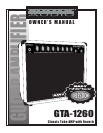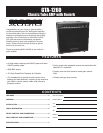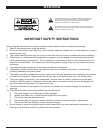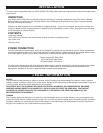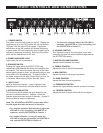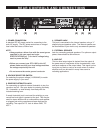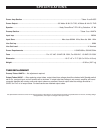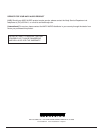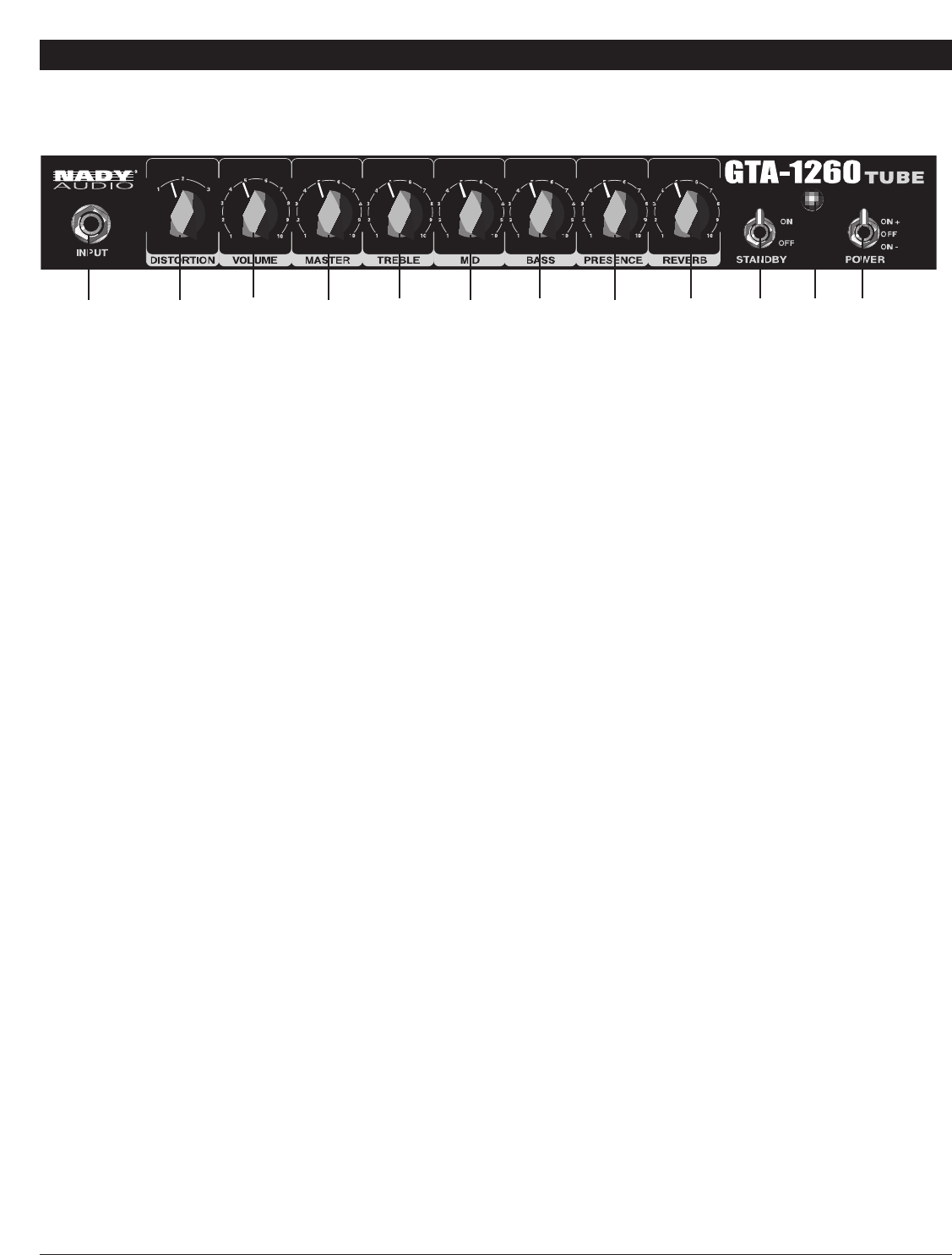
5
FRONT CONTROLS AND CONNECTIONS
(1)
1. POWER SWITCH
This switch turns the main power on and off. Flipping the
toggle switch up to the ON+ position will turn on the amp
“in phase” with the main AC line voltage. Flipping the
switch down to the ON- position will reverse the polarity.
In some cases, AC hum (caused by ground loops) can be
reduced by reversing the polarity. Select the On position
which has the least amount of AC hum.
2. POWER INDICATOR LIGHT
Lights when the unit is powered on.
3. STANDBY SWITCH
Flipping this toggle switch to ON/OFF (STBY) will
respectively enable/disable the audio to the amplifier and
the outputs. This allows for proper warm-up of the tubes
before applying signal to them, and allows the amp to stay
warm when not in immediate use. To extend the life of
the tubes, always turn the Main Power Switch on first, for
1-2 minutes, before flipping ON the Standby Switch.
4. INPUT JACK
Input for instrument outputs — guitar, keyboard, high-
output mics for harmonicas, and other effects devices.
5. DISTORTION SELECTOR
This three-way switch selects the input sensitivity and
amount of overdrive distortion. Position 1 offers the
cleanest signal with least amount of distortion. Position 3
has the maximum amount of distortion.
Note: The VOLUME and MASTER controls also affect
the final signal level and the amount of distortion.
• For cleanest operation (least distortion) adjust the
VOLUME to a very low setting, the MASTER to
maximum, and the DISTORTION to Position 1.
• For medium distortion ( or crunch) adjust the
VOLUME to past the mid position, the MASTER to
mid, and the DISTORTION to Position 2.
• For maximum distortion adjust the VOLUME to
maximum, the MASTER to a very low setting, and
the DISTORTION to Position 3.
6. VOLUME CONTROL
This adjusts the level of the input signal to the amp.
Increasing this level will create distortion dependent on
the DISTORTION setting.
7. MASTER VOLUME CONTROL
Adjusts overall loudness of the amp.
8. TREBLE CONTROL
Adjusts the level of treble/Hi frequencies.
9. MID CONTROL
Adjusts the level of mid-range frequencies.
10. BASS CONTROL
Adjusts the level of bass frequencies.
11. PRESENCE CONTROL
Adjusts the high overtones, texture, and feel of the amp.
12. REVERB CONTROL
Adjusts the level of reverb mixed with the dry signal.
(2)(3)
(4) (5)
(6)
(7)
(8)
(9)
(10)
(11) (12)



